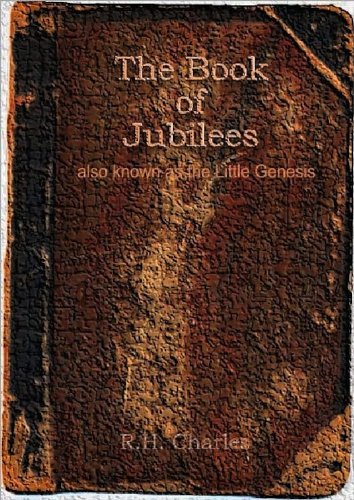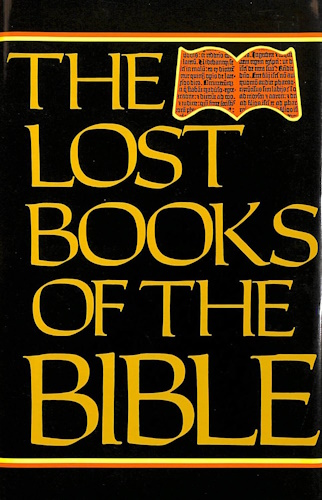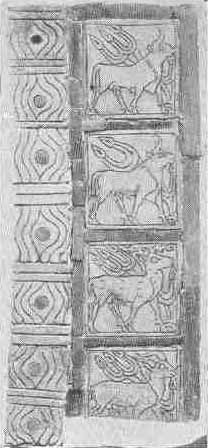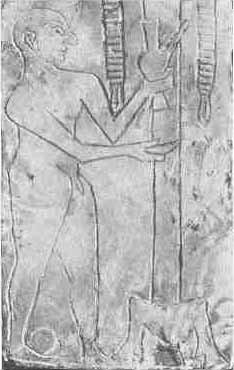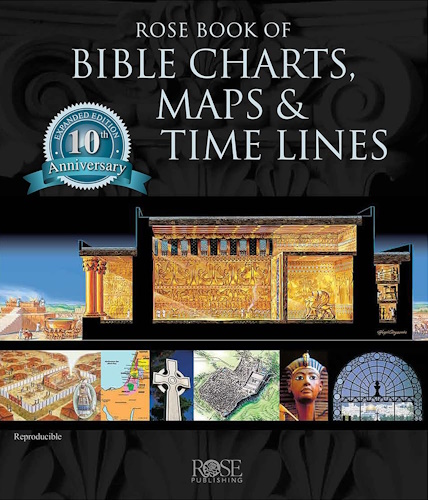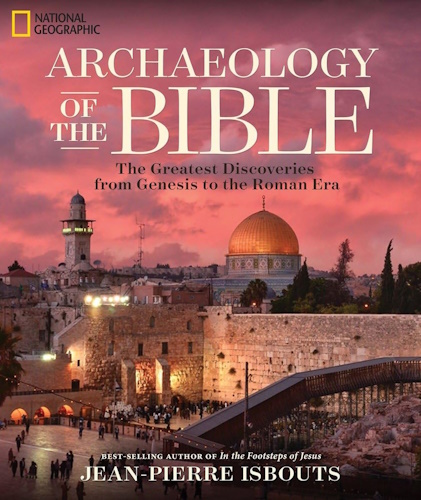
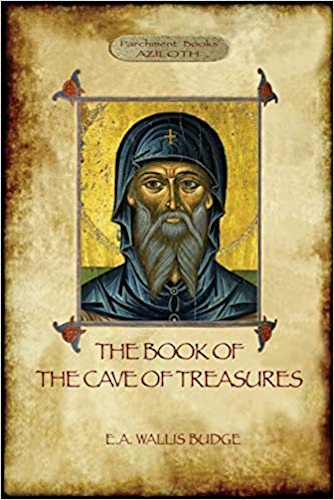
The Book Of The Cave Of Treasures
A History Of The Patriarchs And The Kings
Their Successors From The Creation
To The Crucifixion Of Christ
by
Sir E.A. Wallis Budge, KT.
M.A., LITT.D. (CAMBRIDGE), M.A., D.LITT. (OXFORD),
D.LIT. (DURHAM), F.S.A.
![]()
![]()
p. 249
SUPPLEMENTARY TRANSLATIONS FROM THE "BOOK OF THE BEE."
THE ASSUMPTION OF THE VIRGIN. OUR LORD'S APPEARANCES AFTER THE RESURRECTION. THE LAST SUPPER. THE NAMES OF THE APOSTLES AND DISCIPLES. CHRONOLOGY. GOG AND MAGOG. ANTI-CHRIST. THE GREEK TRANSLATION OF THE HEBREW BIBLE.
The extracts quoted in the preceding pages show how largely Solomon, Bishop of Al-Basrah, borrowed from the "Cave of Treasures" when compiling his work, "The Book of the Bee," especially when he was dealing with the history of the early Patriarchs. But he did not bring his book to a close with the narrative of the Crucifixion, for his aim was to describe briefly the progress of Christianity after the death of Christ; and in doing this he collected and set down in writing a considerable amount of information regarding the Apostles and disciples, and their lives and deaths, and a number of facts and legends which he accepted and wished the
p. 250
Nestorians in his diocese especially to believe. In fact, the "Book of the Bee," though written by a Nestorian bishop, may be regarded as a supplement or continuation of the "Cave of Treasures," which, according to ancient tradition, was written by a Jacobite bishop. Both works are included in the collection of texts which the learned priest Hômô copied in the British Museum MS. Add. 25875, and both were so highly esteemed that copies of them were made for the library of the church of the Virgin Mary in `Amedîa. The following summary is based on my translation of the Syriac text published at Oxford in 1886.
[THE DEATH AND ASSUMPTION OF THE VIRGIN MARY.]
Mary lived twelve years after our Lord's Ascension; the sum of the years which she lived in the world was fifty-eight years, but others say sixty-one years. She was not buried on earth, but the angels carried her to Paradise, and angels bore her bier. On the other hand, we read in the History of the Virgin, "And the blessed Mary departed this life in the year of Alexander, 394 (i.e. A.D. 82-83). At the Annunciation she was thirty years old, and she lived also the thirty-three years of the Dispensation; and after the Crucifixion she lived fifty-eight
p. 251
years. The years which she lived were one hundred and twenty-one." In the same book we have: "And Mary remained in Jerusalem, and grieved because of her separation from our Lord Jesus Christ, and the absence of the apostles from her. And she prayed and cast frankincense into the fire, and lifted up her eyes and spread out her hands to heaven, and said, 'O Christ, the Son of the living God, hearken unto the voice of Thy handmaiden, and send unto me Thy friend John the Young with his fellow-apostles, that I may see them and be comforted by the sight of them before the day of my death; and I will praise and adore Thy goodness.'" And straightway it was revealed by the Holy Spirit to each one of the apostles, in whatever country he was in, that the blessed Mary was about to depart from this world into the never-ending life. And the Spirit summoned them, along with those of them who were dead, to be gathered together at daybreak to the blessed Mary for her to see them: and each one of them came to her from his own land at dawn by the agency of the Holy Spirit, and they saluted Mary and each other, and adored her. Thomas was in India, and an angel took him up and brought him. And he found the angels carrying her bier through the air; and they brought it nigh to Thomas, and he also prayed and was blessed by her.
p. 252
[OUR LORD'S APPEARANCES AFTER HIS RESURRECTION.]
He appeared ten times: 1. To Mary Magdalene (John xx. 11, 18). 2. To the women at the grave (Matt. xxviii. 9, 10). 3. To Cleophas (Luke xxiv. 18). 4. To Simon Peter (Luke xxiv. 34). 5. To all the disciples except Thomas (Luke xxiv. 36-49; John xx. 19-23). 6. To the disciples, Thomas being with them (John xx. 24-29). 7. On the Mount (Matt. xxviii. 16-20). 8. On the Sea of Tiberias (John xxi. 1-24). 9. At His Ascension (Mark xvi. 19; Luke xxiv. 50-53). 10. To the Five Hundred at once (I Cor. xv. 6). After His Ascension he appeared to Paul (Acts ix. 3-9; I Cor. xv. 3), and to Stephen (Acts vii. 55-60).
[THE LAST SUPPER.]
Some men have a tradition that when our Lord broke His body in the Upper Chamber, John, the son of Zebedee, hid a part of his portion until our Lord rose from the dead. When Thomas put his finger near to our Lord's side, and it rested on the mark of the spear, the disciples saw the blood. And John took that piece of consecrated bread, and wiped up that blood with it; and the Easterns Mâr Addai and Mâr Mârî took that piece, and sanctified this
p. 253
unleavened bread which has been handed down among us. Others say that when John took that piece of consecrated bread in his hand, it burst into flame, and burnt in the palm of his hand, and the palm of his hand sweated, and he took that sweat and hid it for the sign of the Cross of baptism.
[THE APOSTLES.]
The Apostles were Twelve and Seventy; their names are:--
SIMON, the chief of the Apostles, was from Bethsaida, of the tribe of Naphtali. He preached for one year in Antioch, where the disciples were [first] called Christians, and he built there the first church, in the house of Cassianus, whose son he restored to life. He lived in Rome twenty-seven years. He was crucified, head downwards, by Nero, in the 376th year of the Greeks (65-64 B.C.).
ANDREW, his brother, preached in Scythia, Nicomedia, and Achaia. He died in Byzantium and was buried in the church which he built there.
JOHN, the son of Zabhdai (Zebedee), was from Bethsaida, of the tribe of Zebulon. He preached in Ephesus, was exiled to Patmos, and then returned to Ephesus, where he built a church. Three of his disciples went with him:--IGNATIUS,
p. 254
later bishop of Antioch, who was thrown to the beasts in Rome; POLYCARP, later bishop of Smyrna who was burnt to death; and JOHN, who succeeded him as bishop. John, the son of Zebedee, was buried by John, his disciple, at Ephesus, and his grave is unknown. John, his disciple, was also buried at Ephesus. He wrote the Revelation, and said that all he had written in that book he had received from John the Evangelist.
JAMES, the brother of John, preached in Bethsaida and built a church there. Herod Agrippa slew him with the sword in the year following the Ascension of our Lord. He was buried at Âkâr, a city of Marmârîkâ.
PHILIP, from Bethsaida, was of the tribe of Asher. He preached in Phrygia, Pamphylia and Pisidia; he died in Pisidia, and was buried in the church which he built there. He lived as an apostle 27 years.
THOMAS, from Jerusalem, was of the tribe of Judah. He taught the Parthians, Medes and Indians; he baptized the daughter of the Indian king, who had him speared to death. Habbân the merchant brought his body to Edessa and buried it there. Some say he was buried in Mahlûph in India.
MATTHEW, from Nazareth, was of the tribe of Issachar. He preached in Palestine, Tyre and
p. 255
Sidon, and went as far as Gabbûlâ (i.e. al-Jabbâl, a town in Coelesyria). He died, and was buried in Antioch.
BARTHOLOMEW, from Endor, was of the tribe of Issachar. He preached in Armenia, Ardeshîr, Ketarbôl, Radbîn and Prûharmân. He first went to Golthon in Armenia, came back to Artaschu, and then went on to Her, Zarevant and Urbianos. He lived as an apostle for 30 years, and then Hûrstî (Rhûstnî or Hêrôstmî), king of Armenia, crucified him in Urbianos. He was buried in the church which he had built in Armenia. The king of Armenia in the time of Bartholomew was called Sanadrog (Sanatruk).
JUDE, the son of James, surnamed THADDAEUS (TADDAI), who is also LEBBAEUS (Lebbai), from Jerusalem, was of the tribe of Judah. He preached in Laodicea, and in Antaradus and Arwâd (Ruwâd). He was stoned in Arwâd, and died and was buried there.
SIMON ZELÔTES, from Galilee, was of the tribe of Ephraim. He preached in Shêmêshât (Samosata), Pârîn (Perrhê), Zeugma, Hâlâb (Aleppo), Mabbôg (Manbig), and Kenneshrîn (Kinnesrîn). He built a church in Kyrrhos, and died and was buried there.
JAMES, the son of Alphaeus (Halphai), was from the Jordan, and of the tribe of Manasseh. He preached in Tadmor (Palmyra), Kirkêsion
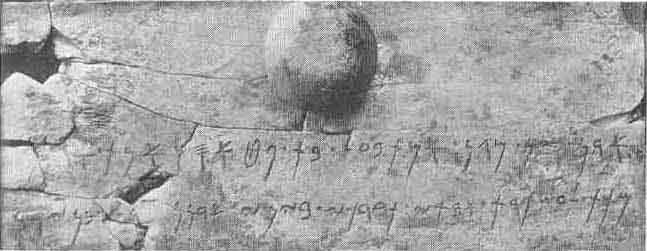

p. 256
(Kîrkîsîyâ), and Callinicos (ar-Rakkah), and came to Bâtnân of Serûg (Sarug), where he built a church, and died and was buried there.
JUDAS ISCARIOT, the Betrayer, from Sekharyût, was of the tribe of Gad or Dan. MATTHIAS, of the tribe of Reuben, came in his stead. He preached in Hellas and in Sicily, where he built a church, and died, and was buried in it.
JAMES, the brother of our Lord, was cast down from a pinnacle of the Temple whilst preaching in Jerusalem; then a fuller of cloth smashed in his skull with a club, and afterwards they stoned him.
JOHN THE BAPTIST was of the tribe of Levi. Herod the tetrarch slew him, and his body was buried in Sebastia.
ANANIAS (HANANYÂ), John's disciple, taught in Damascus and Arbîl. Pôl, the general of Aretas (Aristus) slew him, and he was buried in his church at Arbil.
PAUL, of Tarsus, was a Pharisee and of the tribe of Ephraim (or, Benjamin ?). He went to Peter at Rome, and Nero ordered them to be slain. On their way to the place of slaughter they gave the laying on of hands of the priesthood to their disciples, Peter to Mark, and Paul to Luke. Peter was crucified and Paul was beheaded, and Mark and Luke brought their
p. 257
bodies into the city. But Paul's head could not be found. At length a shepherd found it, and he laid it by his sheep-fold. At night a fire blazed over it, and the shepherd went and told bishop Xystus and the clergy, and when they saw the head they recognized it as Paul's head. They laid the head at the feet of Paul's body, and, having prayed the whole night, the head was found to have joined itself to the body. From his call to the end of his life was 35 years; he travelled for 31 years, and he was in prison at Caesarea for two years, and for two years in Rome. He was martyred in the thirty-sixth year after the Passion of our Lord, and was buried in the royal catacombs in Rome.
LUKE, the physician and Evangelist, was a disciple of Lazarus, and was baptized by Philip in the city of Beroea. He was beheaded by Hôros, the governor of Alexandria under Tiberius, whilst preaching there; he was buried in that city.
MARK the Evangelist preached in Rome, and died and was buried there. He was either the son of Simon Peter's wife or the son of Simon; and Rhoda was his sister. He was first called John, but the Apostles changed his name to Mark.
ADDAI, from Paneas, preached in Edessa and Mesopotamia in the days of Abhgar the king; he
p. 258
built a church in Edessa. Herod, son of Abhgar, slew him in the fortress of Aggêl, or Engîl, north of Amid. He was buried either in Edessa or Rome.
AGGAI, the disciple of Addai, was a silk weaver; because he refused to give up his preaching, Herod, son of Abhgar, broke his legs with a club and he killed him.
THADDAEUS was slain by Herod, son of Abhgar, and was buried in Edessa.
ZACCHAEUS (Zaccai), the publican, was slain whilst preaching in Mount Hôrôn.
SIMON, the leper, taught in Ramah, and the Jews slew him there.
JOSEPH, the Senator, taught in Galilee and Decapolis, and was buried in Ramah.
NICODEMUS, the Pharisee, the friend of our Lord, died in Jerusalem, and was buried there. Some say that he was buried by his brother Gamaliel in Kephar Gamlâ.
NATHANIEL was stoned whilst preaching in Mount Hôrôn (or, Mount Hebron), and died.
SIMON, the Cyrenian, was slain in the island of Chios.
SIMON, son of Cleopas, was bishop of Jerusalem. At the age of one hundred years he was crucified by Irenaeus (or, Hereôs?), the chiliarch.
STEPHEN was stoned to death in Jerusalem, and was buried in Kephar Gamlâ.
p. 260
MARK (sumamed John) taught at Nyssa and Nazianzus; he built a church at the latter place, and died and was buried there.
GEPHAS (Gal. ii. 9; I Cor. i. 12) taught in Baalbec, Hims (Emesa), and Nathrôn (Batharûn); he died and was buried in Shîrâz (Shaizar ?).
BARNABAS, a native of Cyprus or a member of a family of Cyprians settled in Antioch, undertook two preaching missions in that Island, and then went and preached in Northern Italy and Kûrâ for some time. Later he returned to Cyprus, where, according to one tradition, he suffered martyrdom. The various accounts of his life and preaching are described by Lipsius in his Apostelgeschichte(Bd. ii. Heft 2, pp. 276-320).
TITUS taught in Crete, and died and was buried there.
SOSTHENES taught in Pontus and Asia, and was cast into the sea by Nonnus, the prefect.
CRISCUS (CRESCENS) taught in Dalmatia; he died of hunger in Alexandria.
JUSTUS taught in Tiberias and Caesarea, where he died and was buried.
ANDRONICUS taught in Illyricum, where he died and was buried.
RUFUS was slain whilst teaching in Zeugma.
PATROBAS taught in Chalcedon, and died there.
p. 260
HERMAS, the shepherd, taught in Antioch and died there.
NARCISSUS taught in Hellas, and died there.
ASYNCRITUS went to Bêth-Hûzâyê (Ahwâz, Khûzistân), and died there.
ARISTOBULUS taught in Isauria, and died there.
ONESIMUS, the slave of Philemon, fled to Paul in Rome, where his legs were broken, and he died.
APOLLOS was burned to death by Sparacleus (?), governor of Gangra.
OLYMPAS, STACHYS and STEPHEN died in prison in Tarsus.
JUNIAS was slain in Samos.
THEOCRITUS died in Ilios.
MARTALUS (I) was slain by the Barbarians.
NIGER taught in Antioch, and died there.
LUCIUS was dragged behind a horse and died.
ALEXANDER was thrown into a pit in Heracleôpolis (Hierapolis ?) and died.
MILUS was drowned at Rhodes.
SILVANUS and HERÔDIÔN (Rhôdiôn) were slain at Accô.
SILAS taught at Sarapolis (Hierapolis ?), and died there.
TIMOTHY taught in Ephesus, and died there.
MANAEL was burned to death in Accô.
The EUNUCH of Candace was strangled on the island of Parparchia.
p. 261
JASON and SOSIPATRUS were thrown to the beasts in Olmius.
DEMAS taught in Thessalonica, and died there.
OMIUS (HYMENAEUS) taught in Melitene, and died there.
THRASEUS was thrown into a fiery furnace at Laodicea.
BISTORIUS (ARISTARCHUS) taught in the island of Kâ, and died there.
ABRIOS and MÔTOS died in Ethiopia.
LEVI was slain in Paneas by Charmus.
NICETIANUS (NICETAS) was sawn in twain in Tiberias.
JOHN and THEODORUS were thrown to the beasts at Baalbec.
EUCHESTION (?) and SIMON were slain by Methalius in Byzantium.
EPHRAIM (APHREM) taught in Baishân, and died there.
JUSTUS was slain at Corinth.
JAMES taught in Nicomedia, and died there.
[THE NAMES OF THE APOSTLES.]
The TWELVE (Matt. x. Mark iii. Luke vi. Acts i.).
1. Simon Peter.
2. Andrew, his brother.
3. James, the son of Zebedee.
4. John, his brother.
p. 262
5. Philip.
6. Bartholomew.
7. Thomas.
8. Matthew.
9. James, the son of Alphaeus.
10. Labbaeus (Thaddaeus).
11. Simon the Canaanite.
12. Judas Iscariot (in whose stead came Matthias).
The SEVENTY.
1. James, the son of Joseph.
2. Simon, the son of Cleopas.
3. Cleopas, his father.
4-8. Joses; Simon; Judah; Barnabas; Manaeus (?).
9. Ananias, who baptized Paul.
10. Cephas, who preached at Antioch.
11. Joseph, the senator.
12. Nicodemus, the Archon.
13. Nathaniel, the chief scribe.
14. Justus (i.e. Joseph, called Barshabbâ).
15-17. Silas; Judah; John (Mark).
18. Mnason, who received Paul.
19. Manael, foster-brother of Herod.
20. Simon, called Niger.
21. Jason (see Acts xvii. 5-9).
22. Rufus (see Rom. xvi. 13).
23. Alexander.
24. Simon, the Cyrenian, their father.
p. 263
25. Lucius, the Cyrenian.
26. Judah (mentioned in the Acts).
27. Judah, who is called Simon.
28. Eurion (Orion), the splay-footed.
29-32. Thorus; Thorisus; Zabdon; Zakron.
The following were chosen with Stephen:--
33. Philip, whose three (sic) daughters prophesied (see Acts xxi. 9).
34-36. Stephen; Prochorus; Nicanor.
37-39. Timon; Parmenas; Nicolaus (Acts vi. 5).
40. Andronicus, the Greek (Rom. xvi. 7).
41, 42. Titus; Timothy.
The following were with Peter in Rome:--
43, 44. Hermas; Plightâ.
45-47. Patrobas; Asyncritus; Hermas.
The following came with Peter to Cornelius:--
48, 49. Criscus (II Tim. iv. 10); Milichus.
50, 51. Kîrîtôn (Crito); Simon.
52. Gaius, who received Paul.
53, 54. Abrazon (?); Apollos.
The following were rejected from among the Seventy, for they were followers of Cerinthus, and denied our Lord's divinity:--
55-57. Simon; Levi; Bar-Kubbâ.
58-60. Cleon; Hymenaeus; Candarus.
61-63. Clithon (?); Demas; Narcissus.
64-66. Slîkîspus; Thaddaeus; Mârûthâ.
p. 264
Luke, the Physician.
Apollos, the elect.
Ampelius; Urbanus; Stachys.
Popillius (Publius); Aristobulus.
Stephen; Herodion, the son of Narcissus.
Olympas; Mark, the Evangelist.
Addai; Aggai; Mâr Mârî.
[CHRONOLOGY]
| Period | Years |
|---|---|
| From Adam to the Flood was | 2262 |
| From the Flood to Abraham was | 1015 |
| From Abraham to the Exodus from Egypt was | 430 |
| From the Exodus to Solomon and the building of the Temple was | 400 |
| From Solomon to the First Captivity, which Nebuchadnezzar led away captive | 495 |
| From the First Captivity to the prophesying of Daniel was | 180 |
| From the prophesying of Daniel to the Birth of our Lord was | 483 |
| [5265] | |
| All these make 5345 years (sic). | |
p. 265 |
|
| From Alexander to our Lord was | 303 |
| From our Lord to Constantine was | 341 |
| In the year 438 of Alexander, the Macedonian, the kingdom of the Persians had its beginning. |
[For 438 read 538, as the Sasanian dynasty was founded by Ardashîr I in A.D. 226.]
Know, O my brother readers, that from the beginning of the creation of Adam to Alexander was 5180 years.
[OF GOG AND MAGOG.]
When Alexander was king, and had subdued countries and cities, and had arrived in the East, he saw in the confines of the East those men who are of the children of Japhet. They were more wicked and unclean than all [other] dwellers in the world; filthy people of hideous appearance, who ate mice and the creeping things of the earth, and snakes and scorpions. They never buried the bodies of their dead [but ate them]. People ignorant of God, and unacquainted with the power of reason, but who lived in this world without understanding like ravening beasts. When Alexander saw their wickedness, he called God to his aid, and he gathered together and brought them and their wives and children, and made them go in, and
p. 266
shut them up within the confines of the North. This is the gate of the world on the north, and there is no other entrance or exit from the confines of the world from the east to the north. And Alexander prayed to God with tears, and God heard his prayer and commanded those two lofty mountains which are called "the children of the north," and they drew nigh to one another until there remained between them about twelve cubits. Then he built in front of them a strong building, and he made for it a door of brass, and anointed it within and without with oil of Thesnaktîs (i.e. an oil which cannot be burnt off with fire or scraped off with an iron tool), so that if they should bring iron implements near it to force it to open, they would be unable to move it; and if they wished to melt it with fire, it would quench it; and it feared neither the operations of devils nor of sorcerers, and was not to be overcome [by them]. Now there were twenty-two kingdoms imprisoned within the northern gate, and their names are these:--
Gôg, Mâgôg.
Nâwâl, Eshkenâz (Eshkîn).
Denâphâr (Dîfâr).
Paktâyê (the people of Paktuê in the Thracian Chersonesus).
Welôtâyê (Lûdâyê).
Humnâyê (the Huns), Parzâyê.
p. 267
Daklâyê, Thaubelâyê (Tuklâyê).
Darmetâyê, Kawkebâyê.
Dog-men (Cynocephali).
Emderâthâ, Garmîdô.
Cannibals, Therkâyê (Thracians).
Âlânâyê (the Allani), Pisilôn.
Denkâyê (Dunkâyê).
Saltrâyê (Saltâyê).
At the end of the world and at the final consummation, when men are eating and drinking and marrying wives; and women are given to husbands; when they are planting vineyards and building buildings, and there is neither wicked man nor adversary, on account of the assured tranquillity and certain peace; suddenly the gates of the north shall be opened, and the hosts of the nations that are imprisoned there shall go forth. The whole earth shall tremble before them, and men shall flee and take refuge in the mountains and in caves and in burial places, and in clefts of the earth; and they shall die of hunger, and there will be none to bury them, by reason of the multitude of afflictions which they will make men suffer. They will eat dead dogs and cats; they will give mothers the bodies of their children to cook, and they will eat them before them without shame. They will destroy the earth, and there will be none able to stand before them. After one week of
p. 268
that sore affliction, they will all be destroyed in the plain of Joppa, for thither will all those [people] be gathered together, with their wives and their sons and their daughters.
[OF THE COMING OF ANTI-CHRIST.]
In a week and half a week after the destruction of these wretches shall the son of destruction appear. He shall be conceived in Chorazin, born in Bethsaida, and reared in Capernaum. Chorazin shall exult because he was conceived in her, Bethsaida because he was born in her, and Capernaum because he was brought up in her; for this reason our Lord proclaimed Woe to these three [cities] in the Gospel (Matt. xi. 21). As soon as the son of perdition is revealed the king of the Greeks will go up and stand upon Golgotha, where our Lord was crucified; and he will set the royal crown upon the top of the holy Cross, upon which our Lord was crucified; and he will stretch out his two hands to heaven, and will deliver over the kingdom to God the Father. The holy Cross shall be taken up to heaven, and the royal crown with it; and the king will die immediately. The king who shall deliver over the kingdom to God will be descended from the seed of Kûshath, the daughter of Pîl, the king of the Ethiopians; for Armelaus (Romulus), the king of the Greeks, took Kûshath to
p. 269
wife, and the seed of the Ethiopians was mingled with that of the Greeks. From this seed shall a king arise who shall deliver the kingdom over to God, as the blessed David hath said, "Cush will deliver the power to God" (Ps. lxviii. 31).
When the Cross is raised up to heaven straightway shall every head and every ruler and all powers be brought to nought, and God will withdraw His providential care from the earth. The heavens will be prevented from letting fall rain, and the earth from producing germs and plants; and the earth shall remain like iron through drought, and the heavens like brass. Then will the son of perdition appear, of the seed and of the tribe of Dan; and he will show deluding phantasms, and lead astray the world, for the simple will see the lepers cleansed, the blind with their eyes opened, the paralytic walking, the devils cast out, the sun when he looks upon it becoming black, the moon when he commands it becoming changed, the trees putting forth fruit from their branches, and the earth making roots to grow. He will show deluding phantasms [of this kind], but he will not be able to raise the dead. He will go into Jerusalem and will sit upon a throne in the Temple, saying, "I am the Christ," and he will be borne aloft by legions of devils like a king and a lawgiver, naming himself God, and
p. 270
saying, "I am the fulfilment of the types and the parables." He will put an end to prayers and offerings, as if at his appearance prayers are to be abolished and men will not need sacrifices and offerings along with him. He becomes a man incarnate by a married woman of the tribe of Dan. When this son of destruction becomes a man, he will be made a dwelling place for devils, and all Satanic workings will be perfected in him. There will be gathered together with him all the devils and all the hosts of the Indians; and before all the Indians and before all men will the mad Jewish nation believe in him, saying, "This is the Christ, the expectation of the world." The time of the error of the Anti-christ will last two years and a half, but others say three years and six months. And when everyone is standing in despair, then will Elijah (Elias) come from Paradise, and convict the deceiver, and turn the heart of the fathers to the children and the heart of the children to the fathers; and he will encourage and strengthen the hearts of the believers.
[THE HEBREW BIBLE TRANSLATED INTO GREEK.]
Ptolemy Philadelphus reigned 38 years. In the third (or, sixth) year of his reign the fifth millennium from the creation of the world ended. This king asked the Jews who were captives in Egypt, and seventy (or, seventy-two) old men
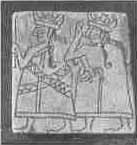
p. 271
translated the Scriptures for him, from Hebrew into Greek, in the Island of Pharos. In return for this he set them free, and gave back to them also the vessels of their temple. Their names were:--
| 1. | Josephus Hezekiah Zechariah John Ezekiel Elisha |
Of the tribe of Reuben. |
| 2. | Judah Simon Samuel Addai Mattathias Shalmi |
Of the tribe of Simeon. |
| 3. | Nehemiah Joseph Theodosius Bâsâ Adonijah Dâkî |
Of the tribe of Levi. |
| 4. | Jothan Abdî Elisha Ananias Zechariah Hilkiah |
Of the tribe of Judah. |
| 5. | Isaac Jacob Jesus Sambât (Sabbateus) Simon Levi |
Of the tribe of Issachar. |
| 6. | Judah Joseph Simon Zechariah Samuel Shamlî |
Of the tribe of Zebulon. |
| 7. | Sambât Zedekiah Jacob Isaac Jesse Matthias |
Of the tribe of Gad. |
| 8. | Theodosius Jason Joshua John Theodotus Jothan |
Of the tribe of Asher. |
p. 272
| 9. | Abraham Theophilus Arsam Jason Jeremiah Daniel |
Of the tribe of Dan. |
| 10. | Jeremiah Eliezer Zechariah Benaiah Elisha Dathî |
Of the tribe of Naphtali. |
| 11. | Samuel Josephus Judah Jonathan Dositheus Caleb |
Of the tribe of Joseph. |
| 12. | Isalus John Theodosius Arsam Abijah Ezekiel |
Of the tribe of Benjamin. |
[Ptolemy II, surnamed Philadelphus, was the son of Ptolemy I, Soter, by Beremce, and was born 308 B.C.; he reigned as sole king from 283 to 247 B.C., when he died. His name was transcribed by the Egyptian annalists thus:--
 PTU[O]LMIS
PTU[O]LMIS
and his title Philadelphus by  meri sen (i.e. "brother-loving"). He enlarged the great Alexandrian Library, which was founded by his father, and in his day it is said to have contained as many as 400,000 books, (i.e. rolls of papyrus). It was by his orders that Manetho, a priest of Sebennytus in the Delta compiled his History of Egypt.]
meri sen (i.e. "brother-loving"). He enlarged the great Alexandrian Library, which was founded by his father, and in his day it is said to have contained as many as 400,000 books, (i.e. rolls of papyrus). It was by his orders that Manetho, a priest of Sebennytus in the Delta compiled his History of Egypt.]
-
Urantia Book, 44:0.11 - The Celestial Artisans
Never in your long ascendancy will you lose the power to recognize your associates of former existences. Always, as you ascend inward in the scale of life, will you retain the ability to recognize and fraternize with the fellow beings of your previous and lower levels of experience. Each new translation or resurrection will add one more group of spirit beings to your vision range without in the least depriving you of the ability to recognize your friends and fellows of former estates.
-
Princess Bride 1987 Wallace Shawn (Vizzini) and Mandy Patinkin (Inigo Montoya)
Vizzini: HE DIDN'T FALL? INCONCEIVABLE.
Inigo Montoya: You keep using that word. I do not think it means what you think it means. -
Urantia Book, 117:4.14 - The Finite God
And here is mystery: The more closely man approaches God through love, the greater the reality -- actuality -- of that man. The more man withdraws from God, the more nearly he approaches nonreality -- cessation of existence. When man consecrates his will to the doing of the Father's will, when man gives God all that he has, then does God make that man more than he is.
-
Urantia Book, 167:7.4 - The Talk About Angels
"And do you not remember that I said to you once before that, if you had your spiritual eyes anointed, you would then see the heavens opened and behold the angels of God ascending and descending? It is by the ministry of the angels that one world may be kept in touch with other worlds, for have I not repeatedly told you that I have other sheep not of this fold?"
-
Urantia Book, Foreword - 0:12.12 - The Trinities
But we know that there dwells within the human mind a fragment of God, and that there sojourns with the human soul the Spirit of Truth; and we further know that these spirit forces conspire to enable material man to grasp the reality of spiritual values and to comprehend the philosophy of universe meanings. But even more certainly we know that these spirits of the Divine Presence are able to assist man in the spiritual appropriation of all truth contributory to the enhancement of the ever-progressing reality of personal religious experience—God-consciousness.
-
Urantia Book, 1:4.3 - The Mystery Of God
When you are through down here, when your course has been run in temporary form on earth, when your trial trip in the flesh is finished, when the dust that composes the mortal tabernacle "returns to the earth whence it came"; then, it is revealed, the indwelling "Spirit shall return to God who gave it." There sojourns within each moral being of this planet a fragment of God, a part and parcel of divinity. It is not yet yours by right of possession, but it is designedly intended to be one with you if you survive the mortal existence.
-
Urantia Book, 1:4.1 - The Mystery Of God
And the greatest of all the unfathomable mysteries of God is the phenomenon of the divine indwelling of mortal minds. The manner in which the Universal Father sojourns with the creatures of time is the most profound of all universe mysteries; the divine presence in the mind of man is the mystery of mysteries.
-
Urantia Book, 1:4.6 - The Mystery Of God
To every spirit being and to every mortal creature in every sphere and on every world of the universe of universes, the Universal Father reveals all of his gracious and divine self that can be discerned or comprehended by such spirit beings and by such mortal creatures. God is no respecter of persons, either spiritual or material. The divine presence which any child of the universe enjoys at any given moment is limited only by the capacity of such a creature to receive and to discern the spirit actualities of the supermaterial world.
-
Urantia Book, 11:0.1 - The Eternal Isle Of Paradise
Paradise is the eternal center of the universe of universes and the abiding place of the Universal Father, the Eternal Son, the Infinite Spirit, and their divine co-ordinates and associates. This central Isle is the most gigantic organized body of cosmic reality in all the master universe. Paradise is a material sphere as well as a spiritual abode. All of the intelligent creation of the Universal Father is domiciled on material abodes; hence must the absolute controlling center also be material, literal. And again it should be reiterated that spirit things and spiritual beings are real.
-
Urantia Book, 50:6.4 - Planetary Culture
Culture presupposes quality of mind; culture cannot be enhanced unless mind is elevated. Superior intellect will seek a noble culture and find some way to attain such a goal. Inferior minds will spurn the highest culture even when presented to them ready-made.
-
Urantia Book, 54:1.6 - True And False Liberty
True liberty is the associate of genuine self-respect; false liberty is the consort of self-admiration. True liberty is the fruit of self-control; false liberty, the assumption of self-assertion. Self-control leads to altruistic service; self-admiration tends towards the exploitation of others for the selfish aggrandizement of such a mistaken individual as is willing to sacrifice righteous attainment for the sake of possessing unjust power over his fellow beings.
-
Urantia Book, 54:1.9 - True And False Liberty
How dare the self-willed creature encroach upon the rights of his fellows in the name of personal liberty when the Supreme Rulers of the universe stand back in merciful respect for these prerogatives of will and potentials of personality! No being, in the exercise of his supposed personal liberty, has a right to deprive any other being of those privileges of existence conferred by the Creators and duly respected by all their loyal associates, subordinates, and subjects.
-
Urantia Book, 54:1.8 - True And False Liberty
There is no error greater than that species of self-deception which leads intelligent beings to crave the exercise of power over other beings for the purpose of depriving these persons of their natural liberties. The golden rule of human fairness cries out against all such fraud, unfairness, selfishness, and unrighteousness.









